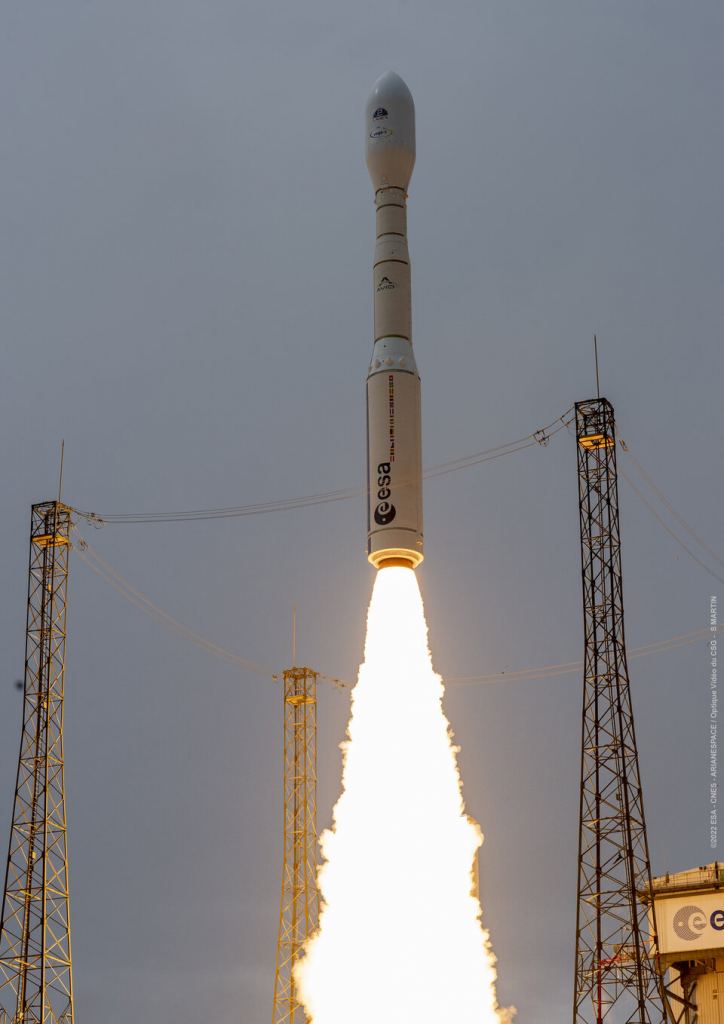The European Space Agency (ESA) launched its final Vega rocket this week, lofting a Sentinel-2C Earth observation satellite into orbit. This wraps up 12 years of service and 20 successful flights for the venerable Vega. The rocket launched several well-known missions, including LISA Pathfinder (2015), the Earth-observing satellites Proba-V (2013), and Aeolus (2018). ESA will now launch these types of payloads on the new Vega-C rocket, capable of launching heavier payloads at a lower price.
Vega's final launch was on September 5, 2024 from Europe's Spaceport in French Guiana, and ESA said that it was fitting the rocket boosted to orbit one of the Sentinel satellites, as Vega had previously launched Sentinel-2A in 2015 and Sentinel-2B in 2017.
Vega was a smaller but powerful rocket launcher designed to loft smaller science and Earth observation satellites, specializing in launching of satellites into polar orbit. At 30 meters (98 ft) tall the rocket weighs 137 tons on the launch pad. Vega consisted of three solid-propellant powered stages with the a liquid-propellant fourth stage. before the fourth liquid-propellant stage took over to bring satellites to their required orbit. Vega could reach space in just six minutes.
Vega’s first launch took place in February 2012, conducting a perfectly executed qualification flight to deploy 9 science cubesats into Earth orbit.
On Vega’s second flight in 2013, a secondary payload adapter called Vespa was added. This provided different options for payload ride-sharing where multiple satellites could be launched on one rocket. This flight brought three satellites to orbit -- Earth observation satellites, ESA's Proba-V, Vietnam's VNREDSat-1A and Estonia's first satellite, the ESTCube-1 technology demonstrator. All three were released into different orbits and the complex mission required five upper-stage boosts, with the flight lasting about twice as long as its first launch.
Countdown and launch of Vega's final flight.The most satellites Vega ever launched to orbit was in 2020 when a variant of Vespa was used -- called the Small Spacecraft Mission Service -- and brought over 50 satellites at once to orbit.
2015 was Vega's' busiest year, launching three ESA missions including a reentry demonstrator called IXV that prove the technology to launch a vehicle to space and return it safely to Earth. According to ESA, in less than two hours Vega accelerated IXV to speeds of 27,000 km/h (16,777 mph) at a height of 412 km (250 miles) before the reentry vehicle splashed down in the Atlantic Ocean.
But now ESA is building on Vega's heritage, and the era of Vega-C has already begun. This new rocket completed its inaugural flight in July of 2022, putting the main payload LARES-2 – a scientific mission of the Italian Space Agency ASI – into orbit as well as six research CubeSats from France, Italy and Slovenia. ESA said Vega-C will provide better performance and greater payload capability as it has two new solid propulsion stages, an uprated fourth stage, a newly designed fairing, and new ground infrastructure.
 Universe Today
Universe Today


